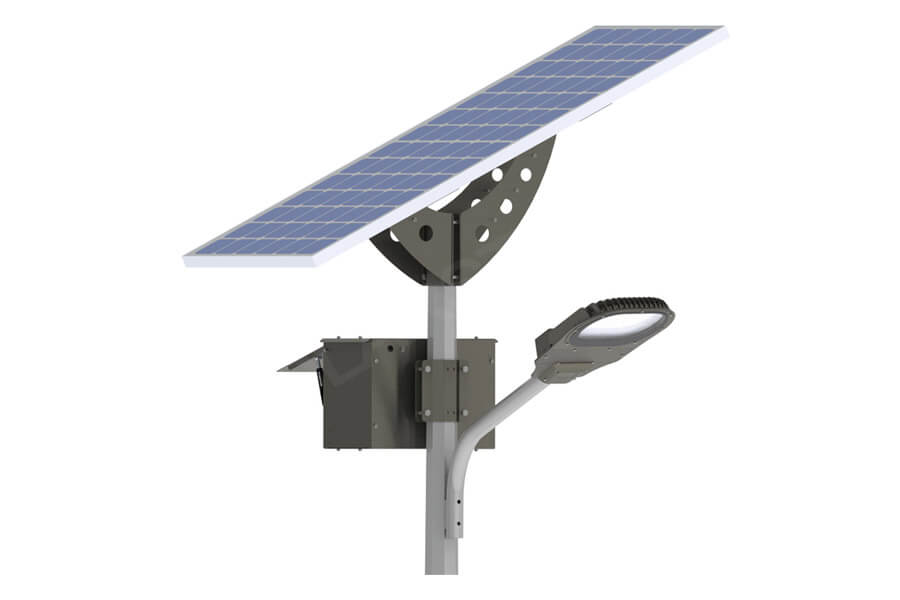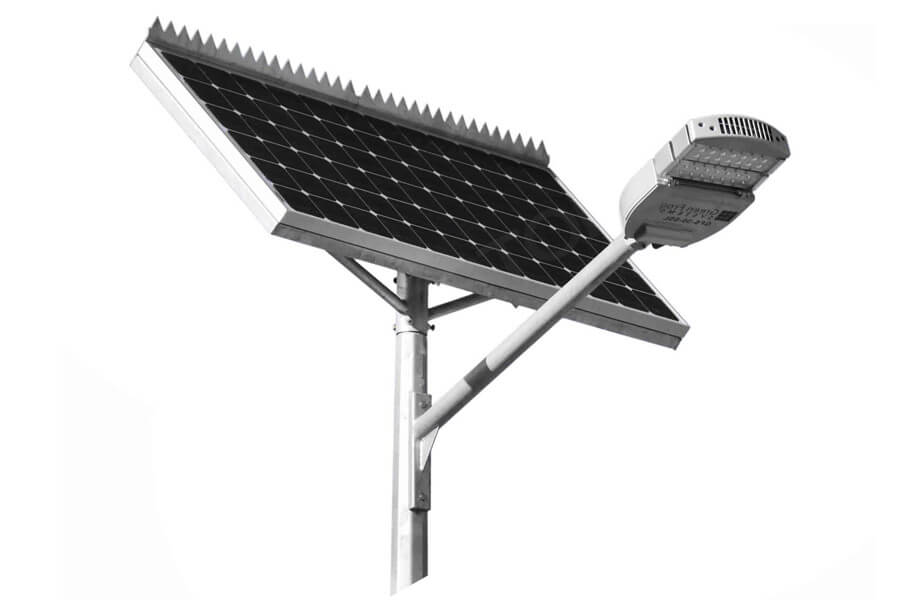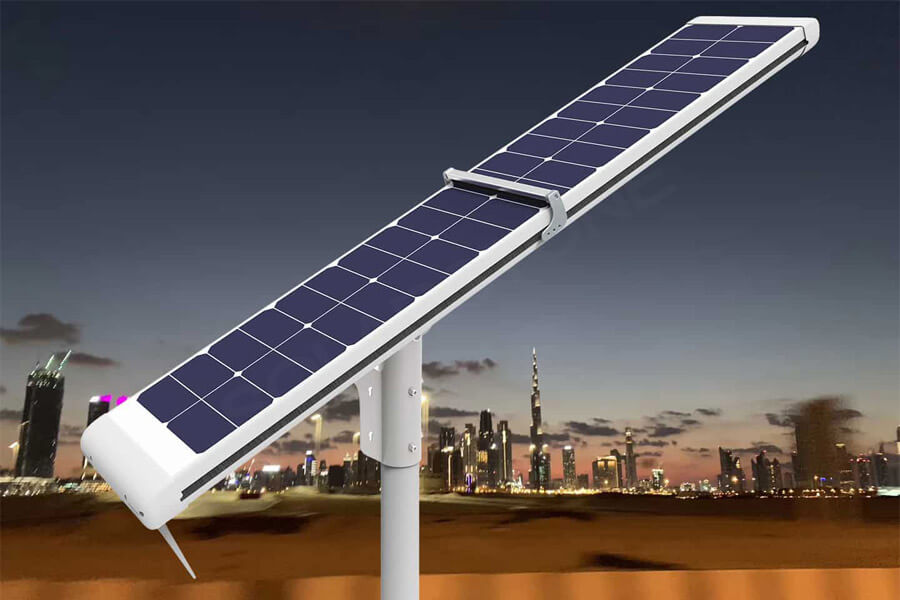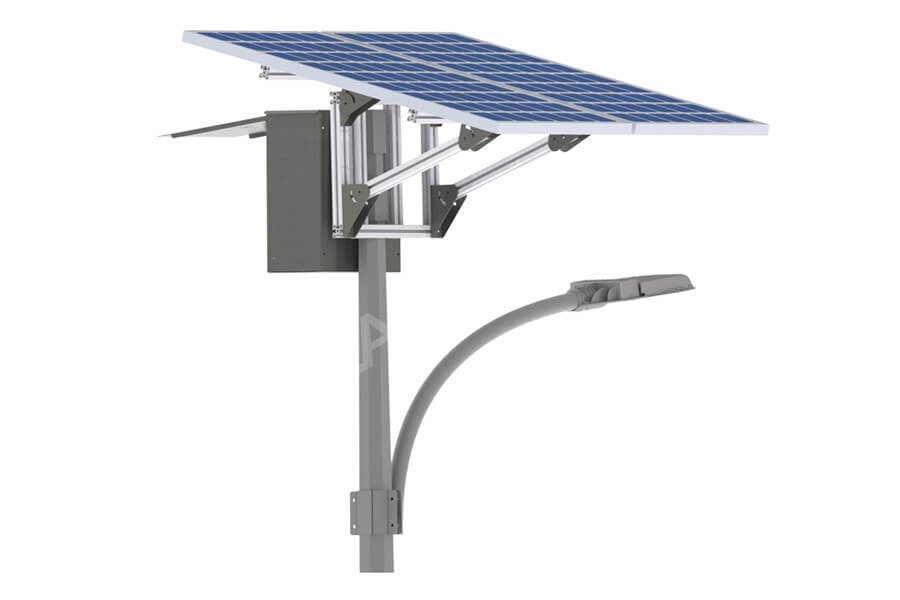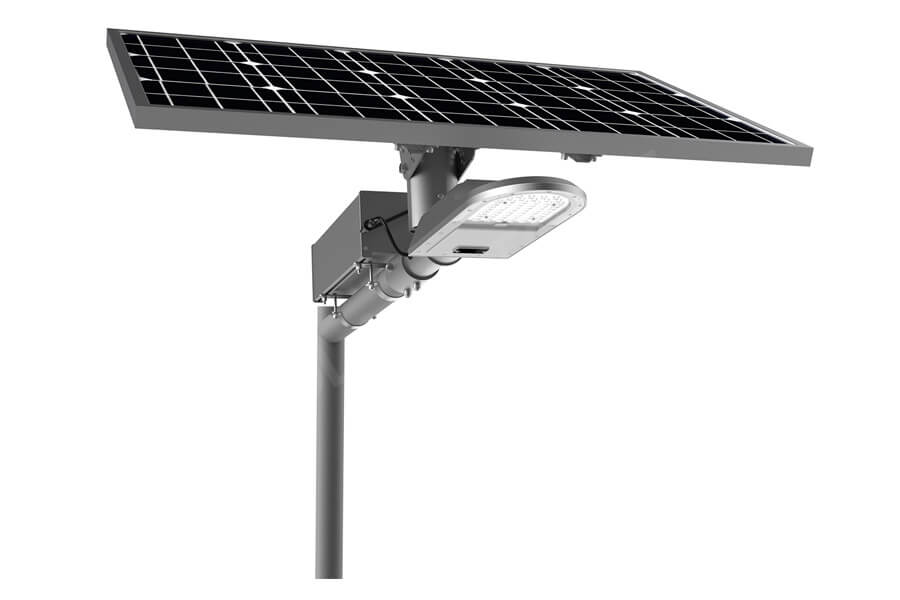Solar street lamps realize the effect of night lighting by converting solar energy into electric energy for storage, and supplying power to solar LED lamps through batteries at night to bring light to pedestrians and vehicles at night. An important component of this function is the solar street lamp controller. Common solar street lamp controllers are in the form of PWM and MPPT. Today, we will introduce the advantages and disadvantages of MPPT controller.
MPPT controller is also called maximum power point tracking mode controller. Such controller is the mainstream solar street lamp controller at present. The circuit is more complex, the cost is higher, and the price is generally ten times of the PWM controller price. The cheaper ones are several times more.
The biggest feature of the MPPT controller is that it can get the maximum energy from the solar panel by adjusting the voltage, and then the MPPT controller is transformed into the charging voltage required by the lithium battery to supply power to the battery.
When the MPPT solar street lamp controller cuts off the direct connection between the PWM controlled solar panel and the lithium battery, the solar panel is kept to charge the low-voltage lithium battery at a higher voltage, so that the charging is faster, The efficiency is higher.
The MPPT solar street lamp controller is divided into three stages: current limiting charging, constant voltage equalizing charging, and constant pressure floating charging.
In the current limiting charging phase of the MPPT controller, the lithium battery voltage is relatively low at this time. The MPPT supplies the maximum output of solar energy to the lithium battery. The stronger the light is, the greater the charging current will be. When it reaches the threshold, it will be directly switched to constant current charging. If the light intensity becomes weaker, it will be immediately switched to the charging mode.
Constant voltage equalizing charging mode. When the lithium battery is under the control of MPPT, whether through fast charging or constant current charging mode, when the lithium battery reaches the saturation voltage, it will enter the constant voltage equalizing charging mode.
At this time, the charging current will slowly decrease. At 0.01C, the constant voltage equalizing charging mode will terminate and enter the floating charging stage.
In the constant voltage floating charging stage, the MPPT controller will charge the lithium battery with a voltage slightly less than the constant voltage charging voltage. This stage is mainly to supplement the power consumed by the lithium battery itself so that the lithium battery can enter a fully saturated battery capacity state when using the stored power.
Unlike the PWM controller, the MPPT controller has the maximum power tracking function. Before the power is saturated, the solar panel can maintain the maximum power output during charging, and the temperature has less impact on the MPPT controller. The charging efficiency is also higher than the PWM controller.
Unlike PWM controller, MPPT controller uses related voltage system intelligently. The corresponding solar street lamp system of MPPT controller is more extensive. For example, the voltage of solar panel can be used between 12V and 170V, and the voltage of battery can be adjusted between 12-96V. It has wider applicability and more flexible and convenient component configuration.


